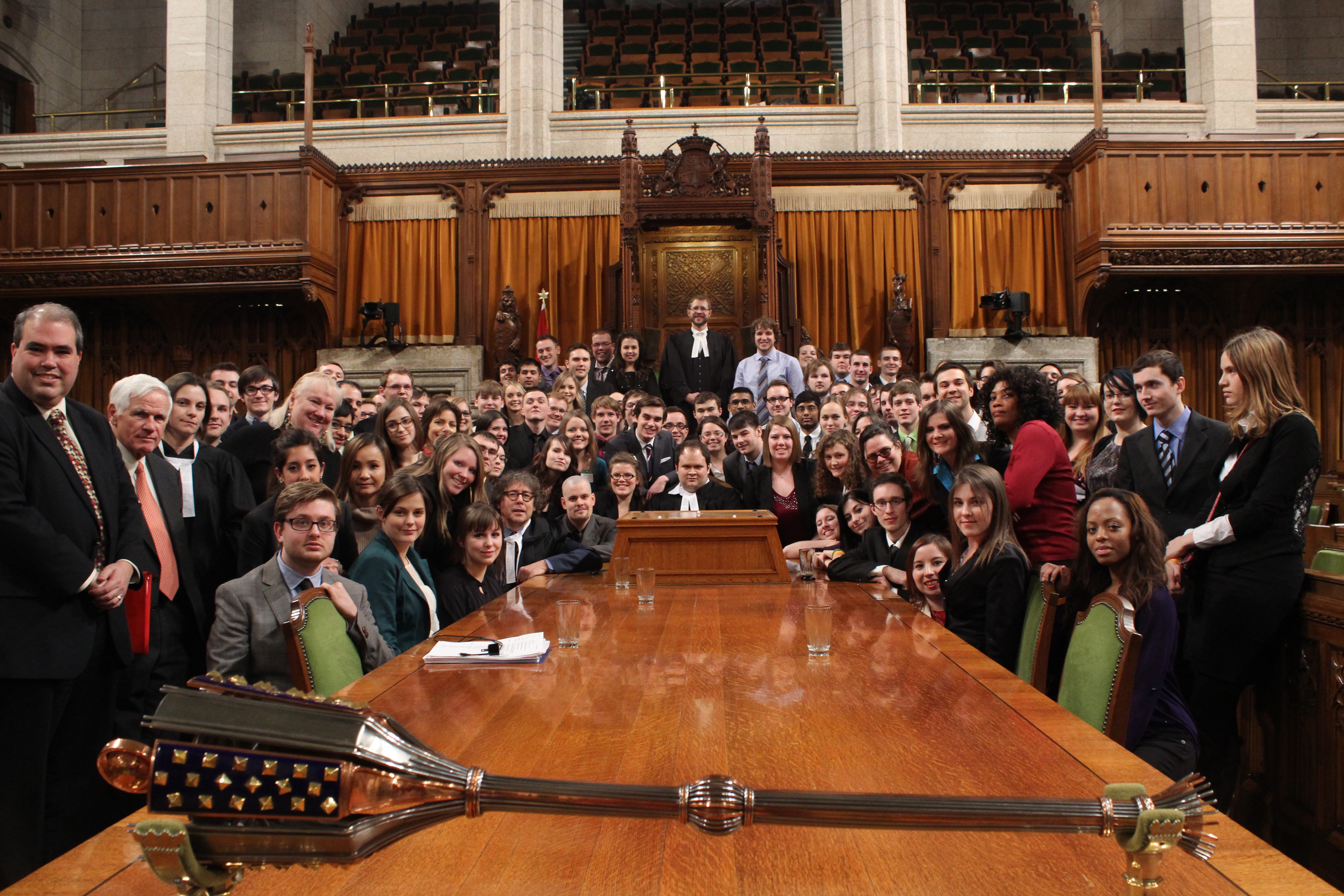By Ryen Veldhuis
Once a year, two universities in Canada get the opportunity to grace the floors of the House of Commons to sit in the chairs of politicians and debate the bills of their political parties.
For 22 years now, Laurentian has held the tradition of holding a Model Parliament, which is open to students of all programs and encourages those not in the political field to join and discover how our country is run. Along with students from the Barrie campus, Laurentian students travelled to Ottawa on the morning of Jan. 9 to make an evening tour of Parliament.
Students had the opportunity to visit several areas of the building not normally seen by tourists. Some of the rooms in the tour included the Senate chamber, the library of Parliament and the hallowed halls of the building marked with paintings of past Prime Ministers and monarchs of England.
The library, we learned during the tour, was nearly lost during a great fire in 1952 when the thick iron doors connecting the library to the Centre Block were sealed, protecting the library from the blaze.
After the tour, the students returned to the hotel for a night of party caucuses in preparation for the early morning of parliamentary debates in the House of Commons. This year, the party in power was the Conservative lead by the ‘Rt. Hon.’ Mark Mancini as the Prime Minister. The official opposition was the NDP, led by Bryan Cayouette and the other parties: the Liberal Party, led by Chantelle Chaput, the Bloc Quebecois, led by Patrick Wright, the Green Party, led by Michelle Sowinski and the First People’s National Party, led by Laurel Lynn Roberts.
That day, each party had its own agenda that could only be made through cooperation with other parties. However, due to party ideologies and back-door dealings, passing a bill was harder for some than others. The night before the day on the floor, Model Parliament veteran and leader of the Conservative party this year, Mancini, said the biggest challenge of the day for his team would be passing the budget.
Mancini said most people in Model Parliament vote against the Conservatives just for being Conservative and indeed even some Conservatives voted against the budget when the time came. Mancini said the Conservative party has never “won” (by passing their bill) longer than he has been participating, four years. However, this year Mancini was confident.
“We have a lot more people this year in the Conservative party who are actually Conservative,” he said.
On Jan. 10, at 8:30 a.m., the opening ceremonies were held in the House of Commons after a last minute meeting of the parties. Soon after the party leaders, beginning with the Prime Minister, gave their opening speeches. The day followed the debates over the bills prepared by each party and gave chance for each party to argue their points for each one. While also giving each member time to make their individual statements.
After lunch, the floor was open to a question period directed to the leading party and their leader on issues needing to be resolved. The theme of the day was of mixed approach, many members opting for fun and comedic statements and speeches while others simulated serious debate.
At the end of the session, at 5 p.m., the members voted on each bill and the budget. All of the bills passed, including the Conservative bill which would allow the leasing of national parks to the private sector, but the Liberal Party’s bill to reform the electoral system of Canada. Some of the bills passed with only a vote difference.
Finally, it came to passing the budget and it did not garner enough votes. However, Mancini put forth a motion to change the budget to allow a greater gain for the NDP, whose large numbers would help pass the budget. The motion was passed and with the help of the NDP the second round, the Conservative budget was passed with more than enough votes. The party was overjoyed when the speaker declared the budget passed.
“I’m really excited right now,” Mancini said. “This hasn’t happened in a very long time.”
This year, many of the students were first-year and non-political science students, something Mancini felt was necessary for Model Parliament. He said it was important to have a good diversity of backgrounds and it might get some of them more excited about Canadian politics.
